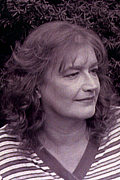It’s Memorial Day and I think it’s sad that on a day we remember those who died in war (for me, all the unnecessary deaths that have occurred throughout my lifetime), I must write about twelve people in a Boston courtroom deciding to kill Dzhokhar Tsarnaev.
One person might not seem like much of a do compared to those who’ve died in all our wars, but for me that decision by those twelve people turned a light on how we as a species operate.
! know the two Tsarnaev brothers murdered three and injured hundreds of others. Some see killing him as more than a fair trade—though a poll shows that 73 percent of Boston’s population was against the death sentence a month before it was handed down by those twelve. In a state that outlaws the death penalty.
I don’t see a fair trade. Just another murder to go along with the others.
The day their verdict was announced I was in New York visiting my infant granddaughters. My first reaction was relief that Mari and Vivian can’t read. How could I explain that my home town decided to murder someone? That those twelve people felt it was “appropriate” to kill another human under the federal government cover of the death penalty. The first execution, by the way, of any “terrorist” since 9/11.
What would I have said to them if they had been able to understand? That a human life is worth next to nothing? Really, all you have to do is open a newspaper to see that it’s cheaper than dirt. Bombs, beheadings, drones, and routine day-to-day murders. We seem willing to kill each other as easily as we step on ants.
I could sit here and detail all the “logical” arguments against the death penalty. How it has proven not to be a deterrent. How we might mistakenly murder an innocent person. How it costs the government more to kill people than have them serve life sentences. How many of the victims of the bombing–people who lost loved ones or had been maimed–spoke out against murdering Tsarnaev.
Not gonna do that. That’s not my point today. For me, the questions are: Do we want to step on ants and murder people? Is it possible to have institutions and governments people might learn from and even respect? Or are we willing to abide starving children, fouling our environment, and sanctioning state murder? Is that the kind of species we really want to be? Or can we be better than that?
What kind of world do you want your grandchildren to grow up in?
But, but, look at the rest of the world. They kill, starve their own, slice off heads, and seem more than willing to fight wars. If the rest of the world is like that, why should we be any different?
I grew up when history books touted our revolution as a beacon of freedom for the rest of the world. Which I believed. And still believe that we can become an example of a kind and loving people. But, honestly? I think I’m going to die believing that we’ve contributed at least as much, if not more, barbarism as any country throughout history. Since 1776 the United States has been at war 93% of the time. Call me crazy but from where I sit right now, the only beacon I see is blood.
I’ve written about my issues with Boston’s response to the Marathon bombings before and have been pretty critical about the way my city’s population was more than willing to ignore their own civil liberties. But there is no doubt that in the bombing’s aftermath the town came together: people treating each other with respect and kindness, often exhibiting the very best of our species’ behavior. “Boston Strong” was a phrase that meant the unification of my city. That we could stand shoulder to shoulder as brothers and sisters. That we, as a city, could be larger, better than those who maimed and killed. That Boston Strong now seems shattered by those twelve people.
My town has a proud but flawed history. An important station destination for the Underground Railroad coupled with the New England slave trade. The first school desegregation case in American history (1848) and rock-throwing racists in the 1970s when desegregation was finally implemented. A city of neighborhoods where it’s difficult to find one that’s actually integrated. And now we have another ugly stain on our history.
I don’t believe in the Tooth Fairy, Tinkerbell, or even Santa Claus. I don’t believe in Utopia.
But I do believe our species can be a whole lot better than we’ve shown. Don’t you think it’s time to start? Do rivers have to run red before we see the folly of war? Why can’t we try to feed the hungry, house the homeless, care for the ill, and begin to turn our back on the notion that it’s everyone for themselves?
What kind of world do you want your grandchildren to inhabit?
What did the people we are remembering today die for?
I think they died believing in making our world a safer, more humane place to live. Where Boston Strong doesn’t crumple into Boston Shame.
What kind of world do you want your grandchildren to inhabit?
In recognizing the humanity of our fellow beings, we pay ourselves the highest tribute. ~ Thurgood Marshall


